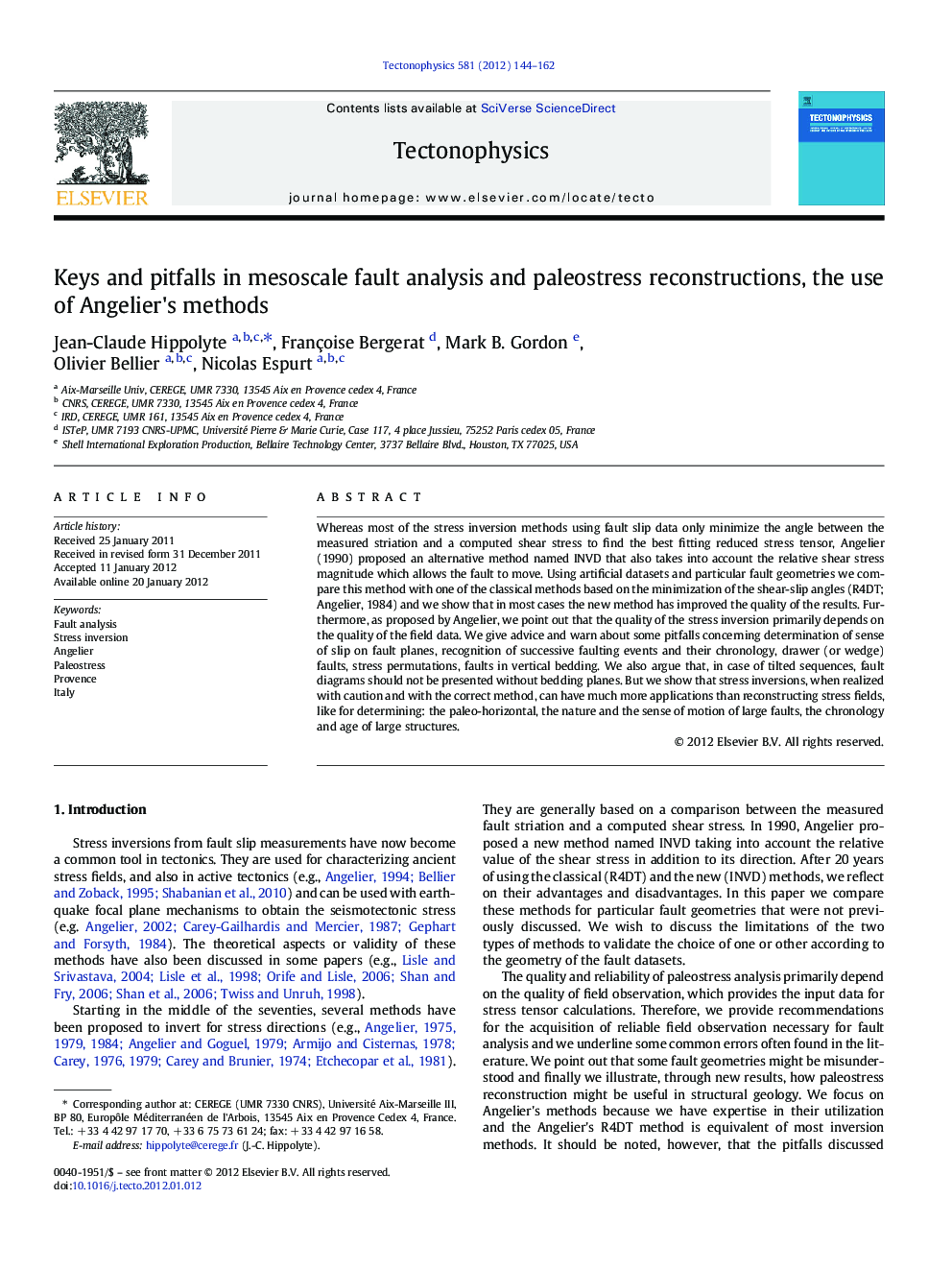| Article ID | Journal | Published Year | Pages | File Type |
|---|---|---|---|---|
| 4692596 | Tectonophysics | 2012 | 19 Pages |
Whereas most of the stress inversion methods using fault slip data only minimize the angle between the measured striation and a computed shear stress to find the best fitting reduced stress tensor, Angelier (1990) proposed an alternative method named INVD that also takes into account the relative shear stress magnitude which allows the fault to move. Using artificial datasets and particular fault geometries we compare this method with one of the classical methods based on the minimization of the shear-slip angles (R4DT; Angelier, 1984) and we show that in most cases the new method has improved the quality of the results. Furthermore, as proposed by Angelier, we point out that the quality of the stress inversion primarily depends on the quality of the field data. We give advice and warn about some pitfalls concerning determination of sense of slip on fault planes, recognition of successive faulting events and their chronology, drawer (or wedge) faults, stress permutations, faults in vertical bedding. We also argue that, in case of tilted sequences, fault diagrams should not be presented without bedding planes. But we show that stress inversions, when realized with caution and with the correct method, can have much more applications than reconstructing stress fields, like for determining: the paleo-horizontal, the nature and the sense of motion of large faults, the chronology and age of large structures.
► We compare Angelier (1990)'s INVD stress inversion method with a classical method. ► Quality of the stress inversion primarily depends on the quality of the field data. ► We warn about some pitfalls in fault interpretation and stress inversion. ► Stress inversions can be used for determining paleo-horizontal, behavior and age of structures.
